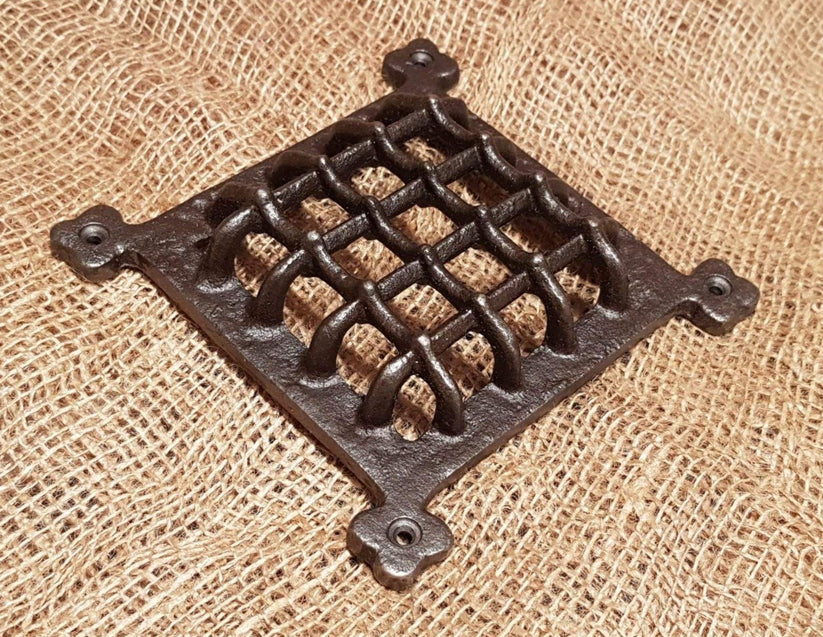If you’re like most homeowners, you probably have a variety of ceiling vent covers in your home – some to cover the vents with when they’re not in use, and others to keep pesky bugs and dust out. If you want to keep your home clean and bug-free without hiring a professional, follow these tips for choosing the right ceiling vent covers for your needs.
Table of Contents
What are Ceiling Vent Covers?
Ceiling vent covers are an important part of any home’s cooling system. Ceiling vent covers keep debris and insects out of your vents, letting your home run more efficiently and saving you money on your energy bill. There are a variety of different types of ceiling vent covers to choose from, so which ones are right for you depends on the type of ventilation system in your home. Here’s a guide to some of the most popular types of ceiling vent covers:
Box fan vent cover: This type of cover is best for box fans that sit directly on the roof or wall. Box fan vents usually have a small opening that lets air flow through the fan, but blocks debris and insects from entering the ventilation system.
This type of cover is best for box fans that sit directly on the roof or wall. Box fan vents usually have a small opening that lets air flow through the fan, but blocks debris and insects from entering the ventilation system. Hanging fan vent cover: This type of cover is perfect for fans that hang from the ceiling by chains or hangers. Hanging fan vents usually have a large opening that allows airflow through the fan and keeps debris and insects out.
This type of cover is perfect for fans that hang from the ceiling by chains or hangers. Hanging fan vents usually have a large opening that allows airflow through the fan and keeps debris and insects out. Ceiling duct covers: These covers are designed to fit over standard
What are Return Air Vent Covers?
There are a few things to consider when purchasing ceiling vent covers, including the type of ventilation system your home has and the design of your ceiling.
If your home has an exhaust ventilation system, you’ll need to get return air vent covers that fit over the intake vents on the rear of your stove or range. These covers keep smoke and ash from getting into your house, and they can also help reduce carbon monoxide levels.
If your home doesn’t have an exhaust ventilation system, or if you just want to add a decorative touch to your air conditioning unit, you can choose ceiling vent covers that are designed to look like light fixtures or stars. If you have a central heating and cooling system, you may not need any special coverings; however, it’s always a good idea to check with your HVAC contractor before making any changes.
Which type of cover is best for your home?
There are a lot of types of ceiling vent covers on the market, so it can be hard to decide which one is best for your home. In this article, we will discuss the different types of coverage and which is best for your needs.
The three main types of ceiling vent covers are: acoustic; vented; and retractable.
Acoustic ceilings have sound-absorbing material built into them, so they help reduce noise levels in a room. They are usually the cheapest type of cover and are not always the best option if you want to keep drafts out or if you need to ventilate your home properly.
Vented ceilings have openings in them that allow air to flow through them, helping to improve ventilation and air circulation in a room. They are usually more expensive than acoustic or retractable covers, but they can offer more features than either type of cover.
Retractable ceilings cover just the top part of a window, leaving the bottom open so you can see out (or in). They are the most expensive type of cover and may not be necessary if you don’t use your windows a lot or if you have good ventilation in your home already.
Which type of cover is best for your needs?
If you want to keep your ceiling vents clean and free of dust, then you’ll need to choose a type of cover that can do just that. There are three main types of covers available on the market: mesh, cloth, and metal.
Mesh covers are the cheapest option and work best if you just want to keep debris from falling into your vents. They’re not very effective at cleaning the vents, however, and they can be difficult to remove if you decide you want to use them for something else.
Cloth covers are more expensive than mesh covers, but they’re much better at keeping debris out of the vents. They also tend to be more durable and easier to remove if needed.
Metal covers are the most expensive option, but they’re also the most effective at cleaning your vents. They contain slots that allow airflow through them, so they work best when used in conjunction with a cleaner like an HVAC company’s duct Cleaning Service。
DISCLAIMER : This and other personal blog posts are not reviewed, monitored or endorsed by Blogjab. The content is solely the view of the author and Blogjab is not responsible for the authenticity of content of this post in any way. Our curated content which is handpicked by our editorial team may be viewed here.






